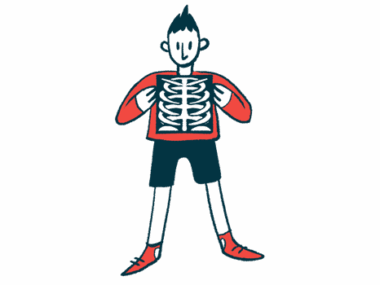2 Boys With PWS Develop Respiratory Failure After Scoliosis Surgery
Written by |

Two boys with Prader-Willi syndrome (PWS) developed respiratory failure — a condition in which the oxygen level in the blood becomes too low — after surgery to correct scoliosis (a sideways curvature of the spine), a report says.
“Even after scoliosis surgery, ‘periodic’ monitoring of respiratory failure with an ‘objective’ test method is needed for timely respiratory support,” its authors wrote.
The report, “Respiratory failure after scoliosis correction surgery in patients with Prader-Willi syndrome: Two case reports,” was published in the World Journal of Clinical Cases.
Scoliosis may develop in children with PWS as a result of decreased muscle tone. During adolescence, when growth is accelerated, scoliosis makes the rib cage press against the lungs. Sometimes, this may result in inadequate ventilation (hypoventilation).
If a person hypoventilates, carbon dioxide accumulates in the blood to a dangerous level — a condition known as hypercapnia. At the same time, the oxygen level in the blood becomes too low to meet the needs of the body — a condition known as hypoxemia. Therefore, scoliosis surgery can help prevent and correct respiratory deterioration.
“However, there has been no accurate report on changes in respiratory function before and after scoliosis surgery,” the investigators wrote, adding that “reliable respiratory function tests are needed.”
In the case report, a team of investigators in South Korea described two boys, 12 and 13 years old, who showed symptoms and signs of respiratory failure about half a year after they had surgery for scoliosis. Both were obese — a common characteristic of PWS.
“We aimed to highlight the need for clinical guidelines regarding the timely detection of respiratory failure through regular and objective respiratory monitoring in these patients, especially after scoliosis correction surgery,” the investigators wrote.
The 12-year-old boy started experiencing difficulty sleeping on his back six months after his surgery. He also snored, felt tightness in his chest, and was sleepy during the day. His lung function, measured using forced vital capacity — the total amount of air exhaled after taking the deepest breath possible — was worse than before the surgery.
Laboratory tests revealed hypercapnia and hypoxemia, and a sleep study that measures oxygen saturation confirmed a low amount of oxygen in the blood. An echocardiogram to look at the heart and nearby blood vessels revealed pulmonary hypertension, or too much pressure in the arteries that supply the lungs.
The 13-year-old boy started experiencing shortness of breath even during light activity seven months after his surgery. He felt sleepy in the daytime. During the night, his breathing repeatedly stopped (apnea) and his skin took on a bluish tone due to low blood oxygen (cyanosis).
Compared to before the surgery, his lung function had worsened. Laboratory tests revealed hypercapnia and hypoxemia, and a sleep study confirmed low oxygen saturation.
Both boys were diagnosed with hypoventilation along with severe obstructive sleep apnea, which occurs when the throat muscles intermittently relax and block the airway during sleep. Both patients were put on non-invasive ventilation using a mask to assist with breathing during the night.
Non-invasive ventilation corrected their hypercapnia and hypoxemia, and improved their sleep. The benefits in oxygen and carbon dioxide levels were sustained over at least a year in the 13-year-old boy. The younger patient showed lung function improvements over two years.
“These cases highlight the need for objective respiratory tests and timely respiratory support through perioperative and periodic pulmonary check-ups in PWS patients,” the team concluded.







